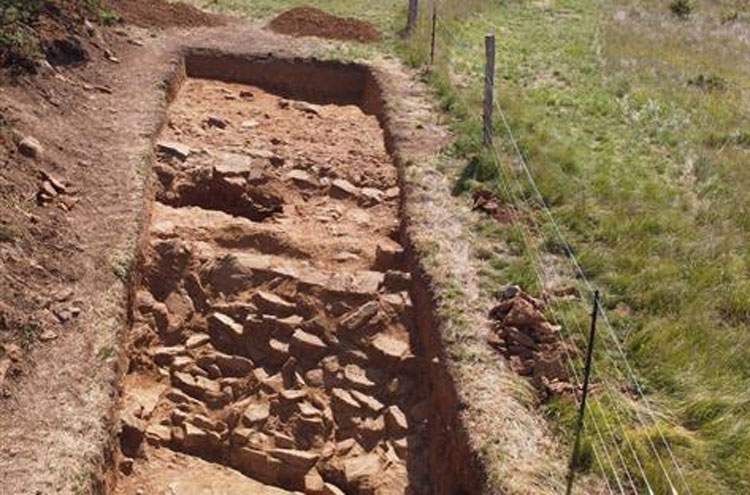Trieste, on St. Rocco Hill new discoveries on one of the oldest Roman camps in Europe
On the hill of San Rocco/Koromacnik, in the Municipality of San Dorligo della Valle - Obcina Dolina, thanks to archaeological excavations in the Roman Republican camp of San Rocco/Koromacnik, vast defense structures have been discovered that reveal new insights intoRoman military architecture of the 2nd and 1st centuries BC.
The second excavation campaign, conducted under ministerial concession under the direction of Federico Bernardini of the Abdus Salam International Center for Theoretical Physics and the Venice Centre for Digital and Public Humanities at Ca’ Foscari of Venice, in collaboration with the University of Trieste, the Institute of Archaeology of the Slovenian Academy of Sciences and Arts/ Znanstvenoraziskovalni center Slovenske akademije znanosti in umetnosti and the Superintendence of Archaeology, Fine Arts and Landscape of Friuli Venezia Giulia.
The Hill of San Rocco, largely owned by the Srenja Vicinia Bolliunz Commune, is the site of one of the oldest known Roman encampments in Europe, presumably built shortly after the founding of Aquileia (181 B.C.) in the first half of the second century B.C. The hill is watered to the south by the Rosandra stream and rises in a strategic position a few hundred meters from the innermost, protected point of the Gulf of Trieste. The encampment extends over more than thirteen hectares and has a rather complex layout: the main fortification structure is almost semicircular in shape, while various masonry is visible inside.
The excavations carried out involved part of the rectangular fortification at the top of the hill and a section of the large outer fortification, with the intention of defining the construction techniques and chronology of the structures. The research made it possible to learn about complex defensive works formed by earthworks associated with stone structures and ditches, unparalleled in the few known coeval sites on the Iberian Peninsula. In particular, the outer defense wall presents from the outside to the inside of the encampment a small ditch that probably housed a palisade, a ballast of stones about 1.5 meters high, an additional small ditch perhaps used for the attachment of wooden obstacles, and finally, at a slightly higher elevation, a walkway about 5 meters wide composed of a sack wall and an inner embankment, originally protected by a wooden parapet. The structure retains clear traces of a fire that reached very high temperatures. The study of the ceramic materials found, mainly amphorae, and of the abundant charcoal remains will most likely make it possible to clarify the chronology of the structure and to understand whether it may be related to the 178-177 B.C. war, as recently speculated, or to a later time.
To acquaint the public with the new discoveries made as a result of the excavations, two free guided tours will be organized on Wednesday, July 14 and Friday, July 16, 2021; the archaeologists in charge of the work will lead visitors around the site. Meet at 5:30 p.m. in the square in front of Wartsila (Bagnoli della Rosandra, 334, 34018, San Dorligo della Valle). Reservations are required, writing to fbernard@ictp.it. There is a maximum number of 20 people per guided tour.
 |
| Trieste, on St. Rocco Hill new discoveries on one of the oldest Roman camps in Europe |
Warning: the translation into English of the original Italian article was created using automatic tools. We undertake to review all articles, but we do not guarantee the total absence of inaccuracies in the translation due to the program. You can find the original by clicking on the ITA button. If you find any mistake,please contact us.





























